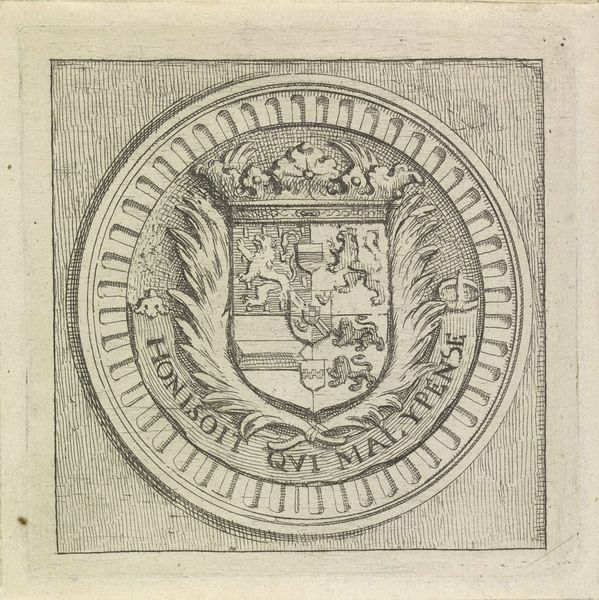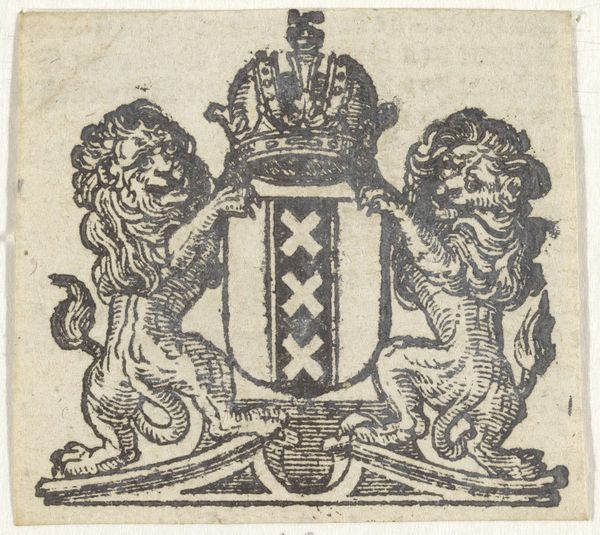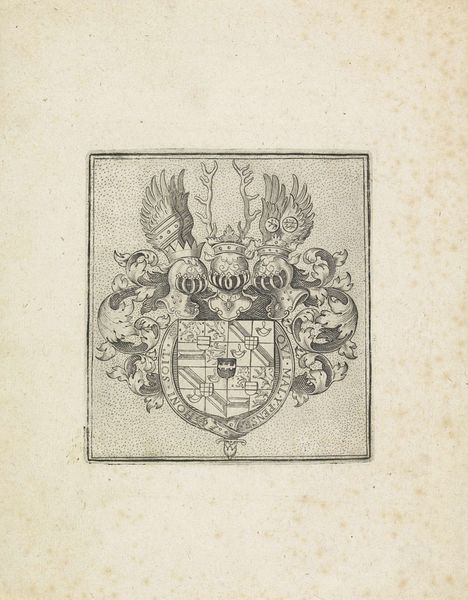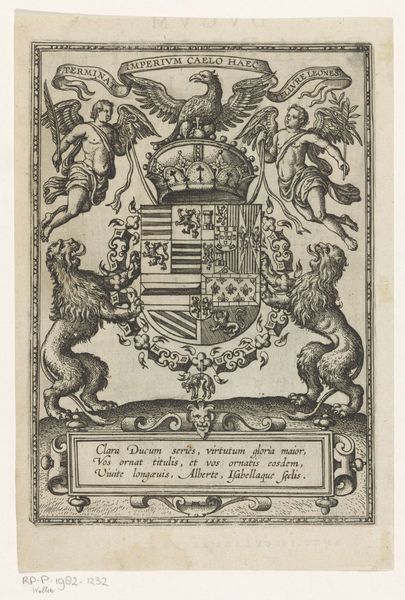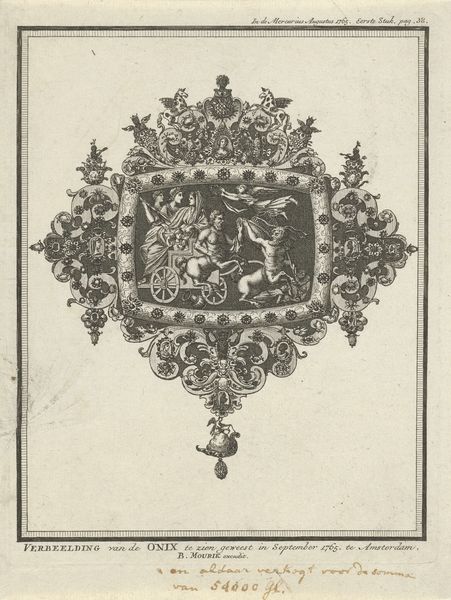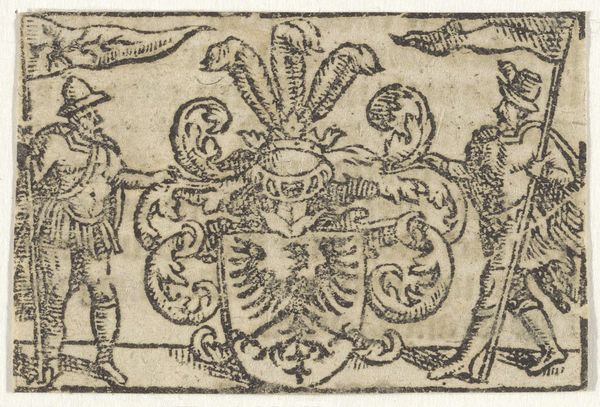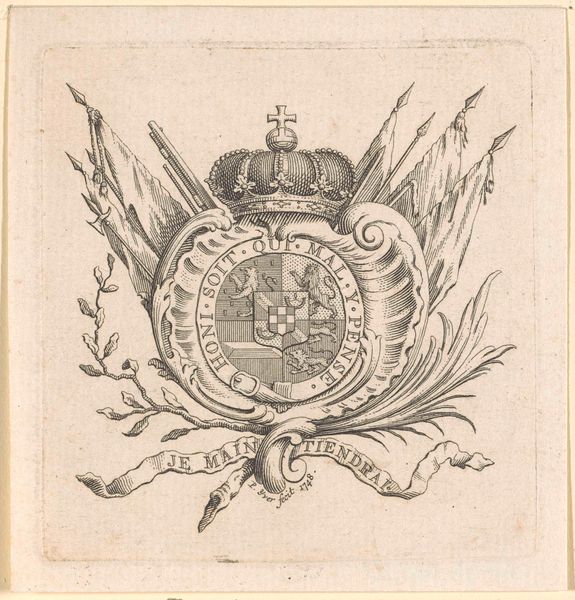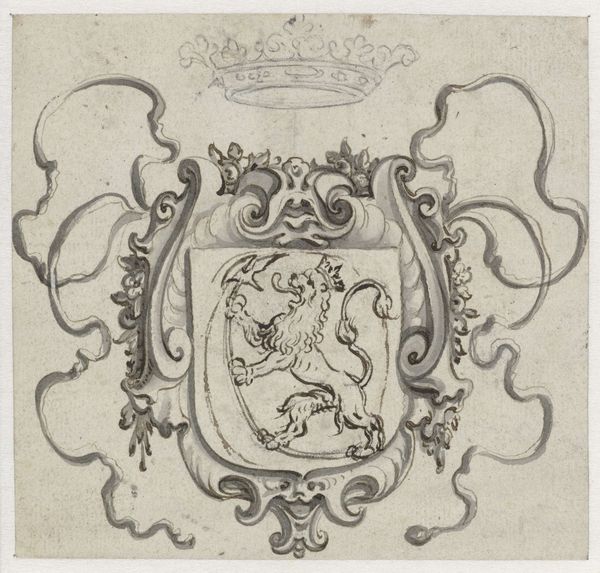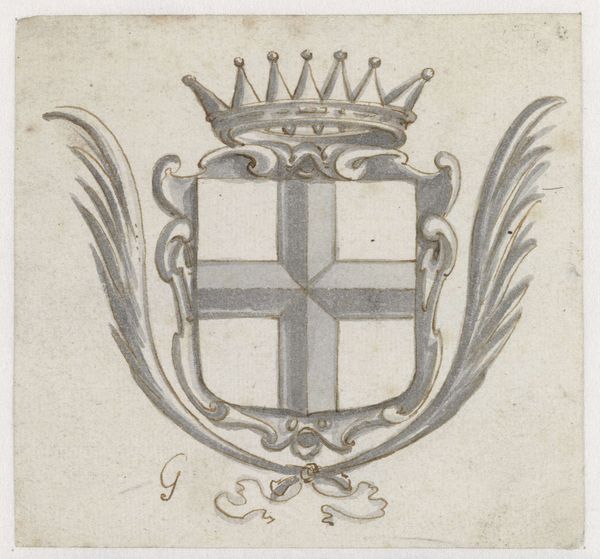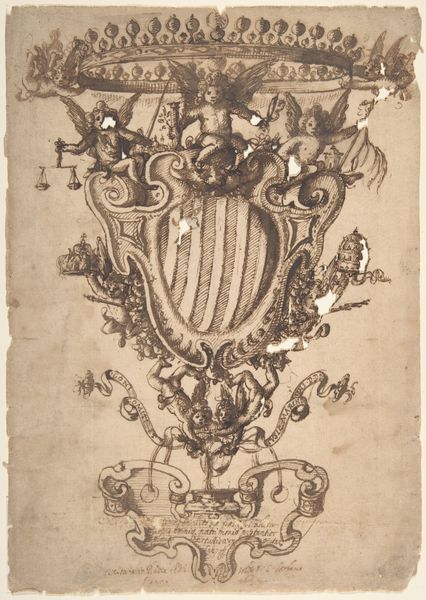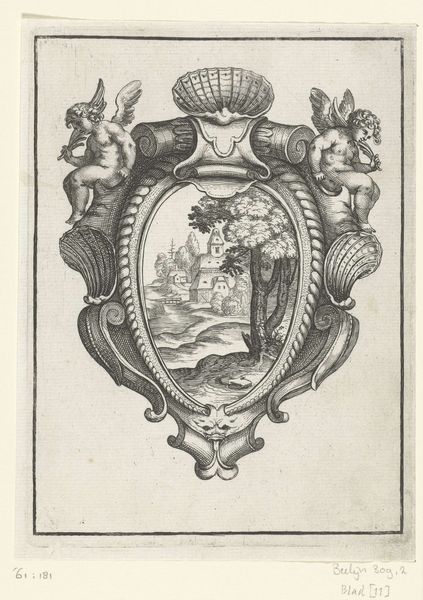
Achterkant van penning met wapen van Koning Ferdinand I van Hongarije en Bohemen 1510 - 1550
0:00
0:00
sebaldbeham
Rijksmuseum
print, engraving
# print
#
11_renaissance
#
geometric
#
line
#
northern-renaissance
#
engraving
Dimensions: height 58 mm, width 43 mm
Copyright: Rijks Museum: Open Domain
Curator: What strikes me most immediately is this aura of contained power, an almost talismanic quality. It's subtle, but it speaks volumes. Editor: Indeed. This engraving, made sometime between 1510 and 1550, is called “Achterkant van penning met wapen van Koning Ferdinand I van Hongarije en Bohemen," or "Reverse of a medal with the coat of arms of King Ferdinand I of Hungary and Bohemia.” It's by Sebald Beham. The Rijksmuseum holds it. Curator: It feels so intricate, especially considering it’s a print. All those tiny, etched lines creating a world of heraldry, power…and that miniature crown perched on top. It’s so very proud of itself, isn’t it? Almost like a tiny king on a very large throne. Editor: Well, coats of arms are really visual compressions of dynasty, aspiration, and identity. This particular image uses the symbolism of crowns, lions, and geometric fields to instantly broadcast Ferdinand’s lineage and claim to rule. That little bear-like creature at the bottom— Curator: Oh! I thought it was a disgruntled badger… Editor: Probably originally designed after one! Anyway, that supporter beneath the shield hints at regional identity or familial association within his dominion. Curator: And it's the back of the medal...I suppose this wasn’t meant for the casual glance; it's for initiates, insiders, people who understood the semiotics. It’s a secret handshake encoded in lines, or perhaps I could imagine holding this, feeling its weight, knowing all the silent stories packed into its details. Editor: Exactly. Printmaking like this, allowed for a relatively wide distribution of these emblems, reinforcing his presence and legitimacy across territories he controlled...and those he aspired to. Curator: So, it’s propaganda in miniature. Who knew political spin could look so delightfully ornate? Editor: Ultimately, seeing all that meaning embedded in form… it’s a potent reminder of how visual language shapes our perceptions. Curator: I leave, not only appreciating the skill involved but contemplating those layers of encoded symbolism, like unraveling a story told in visual whispers. Editor: Absolutely. This piece invites us to examine the symbols that define power, and how those symbols echo, evolve, and endure across centuries.
Comments
No comments
Be the first to comment and join the conversation on the ultimate creative platform.
